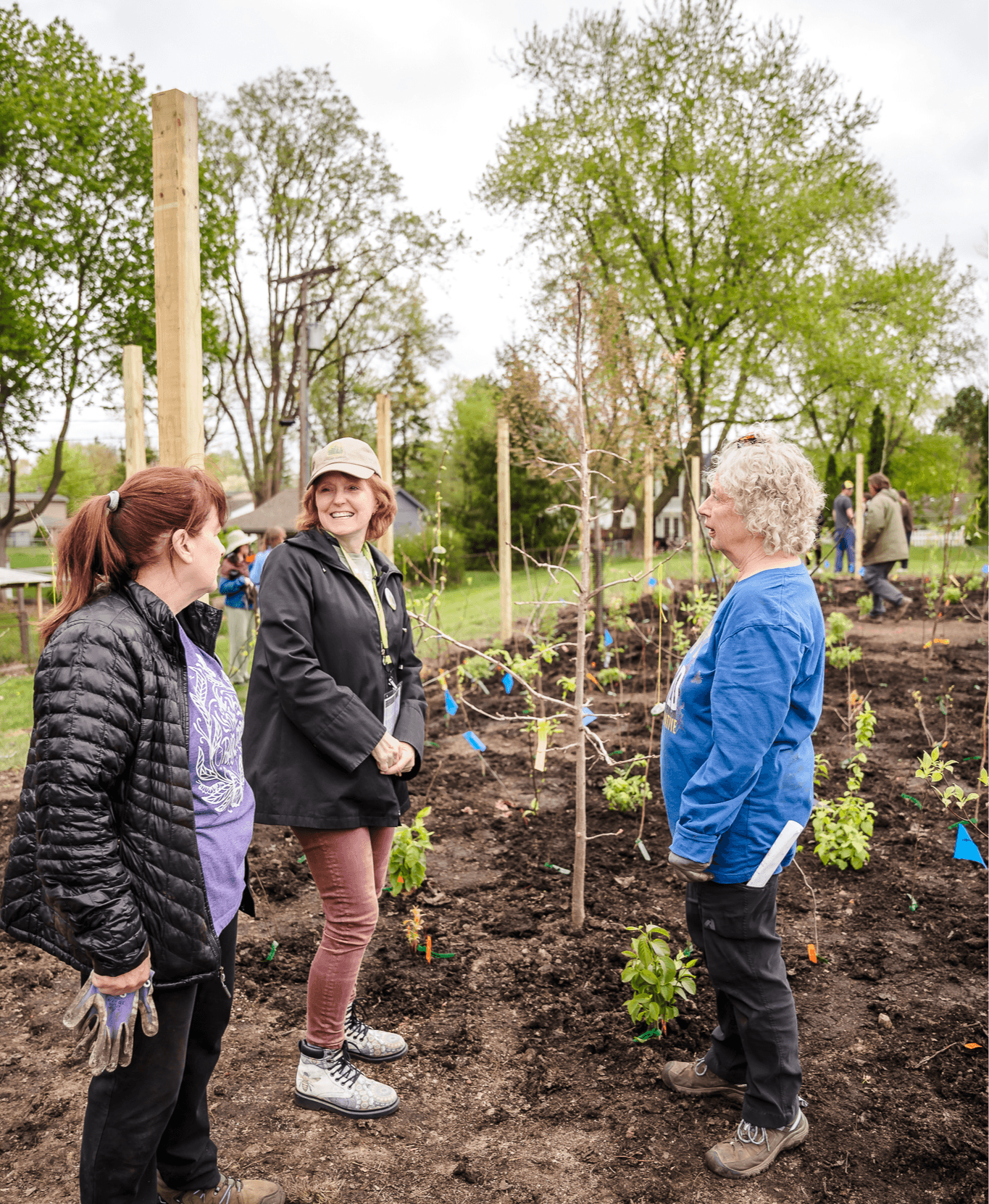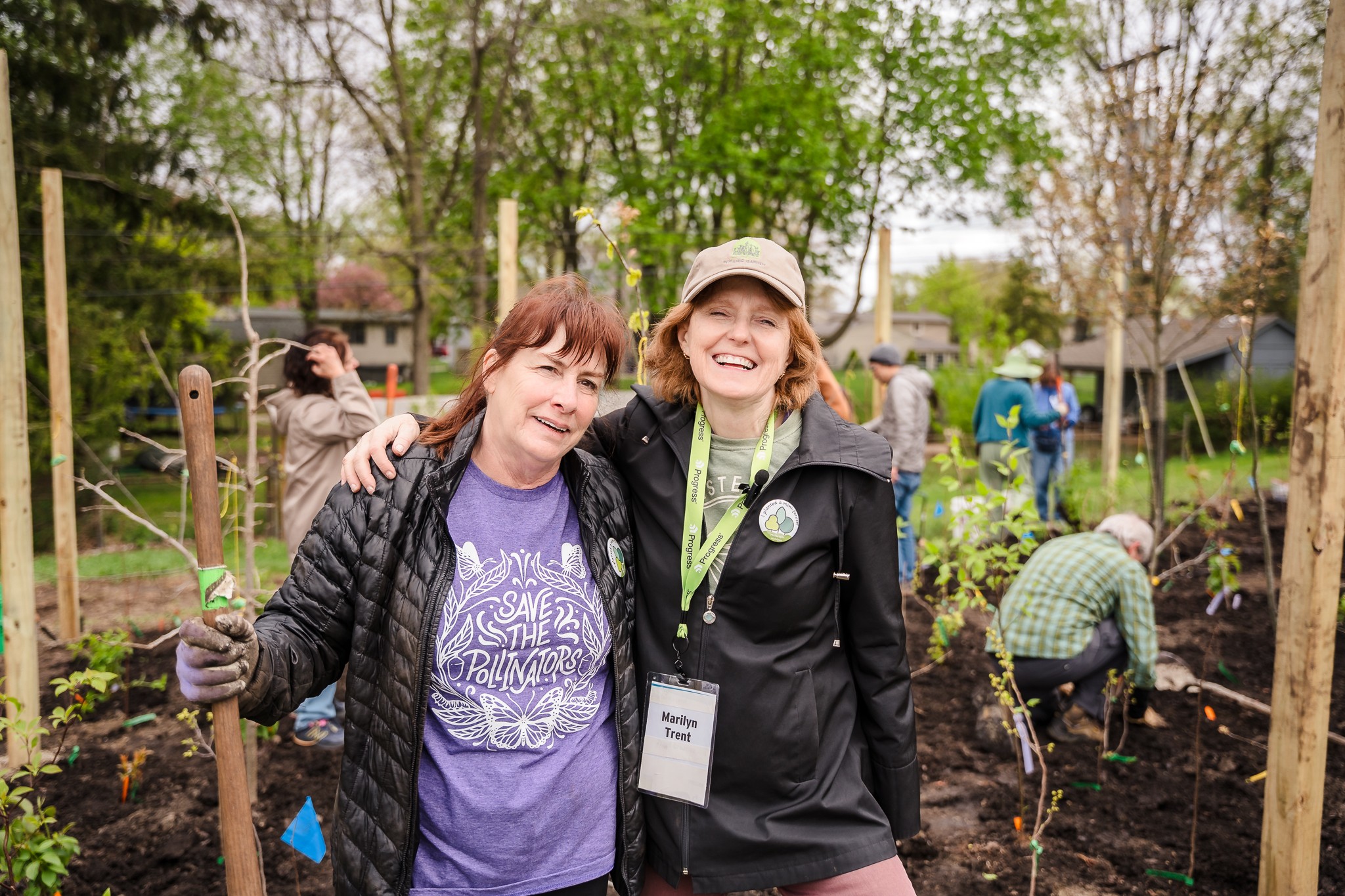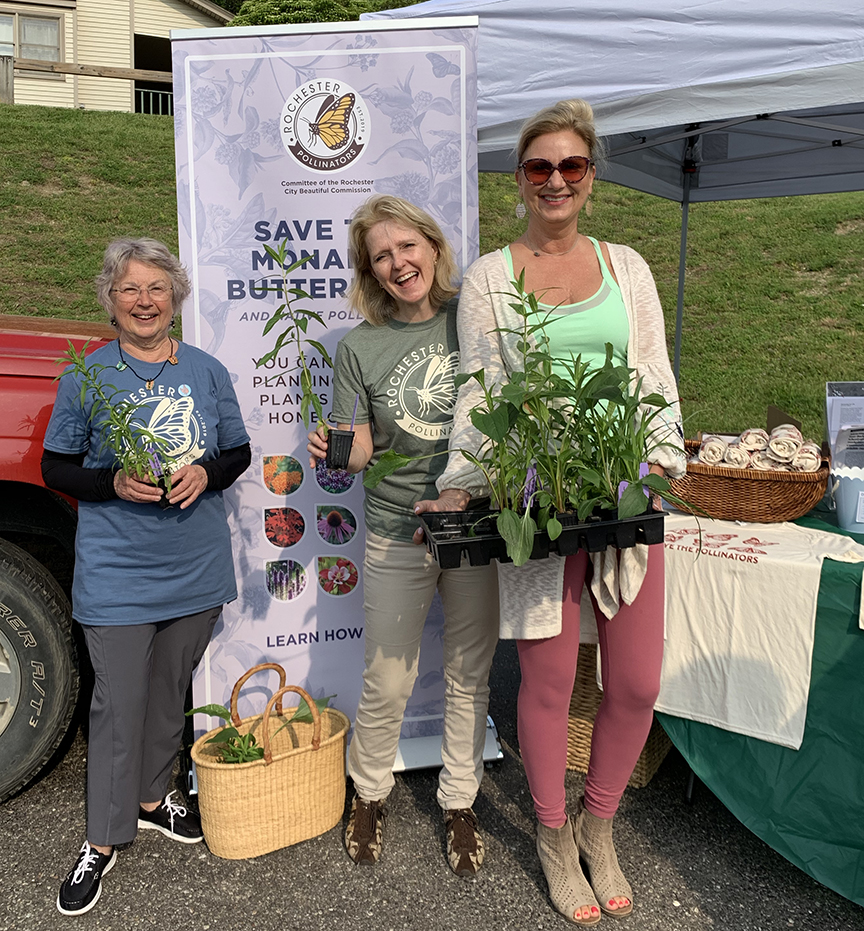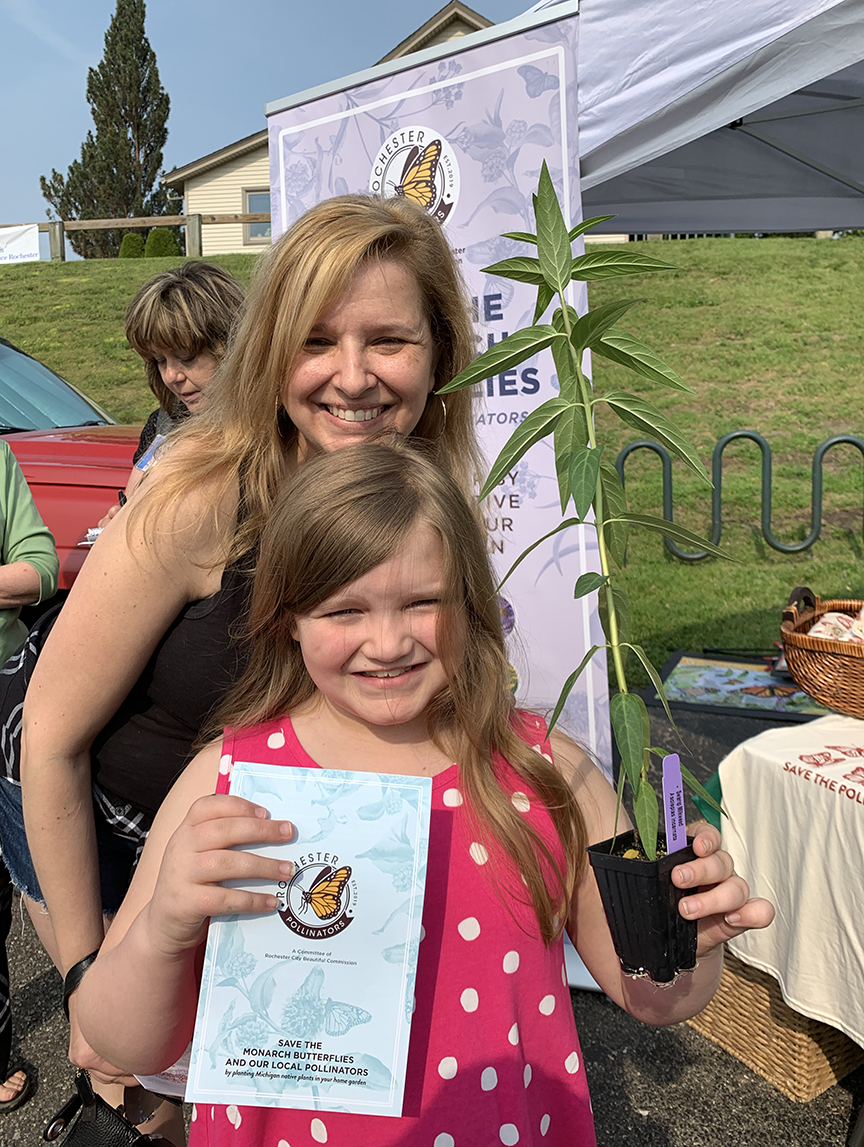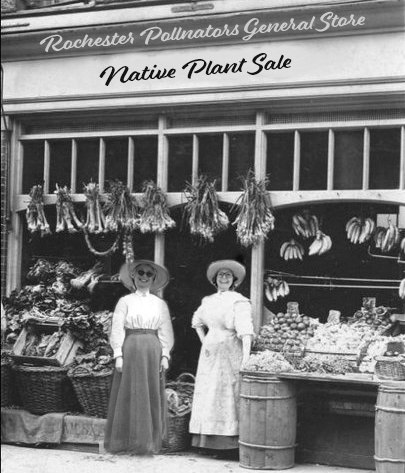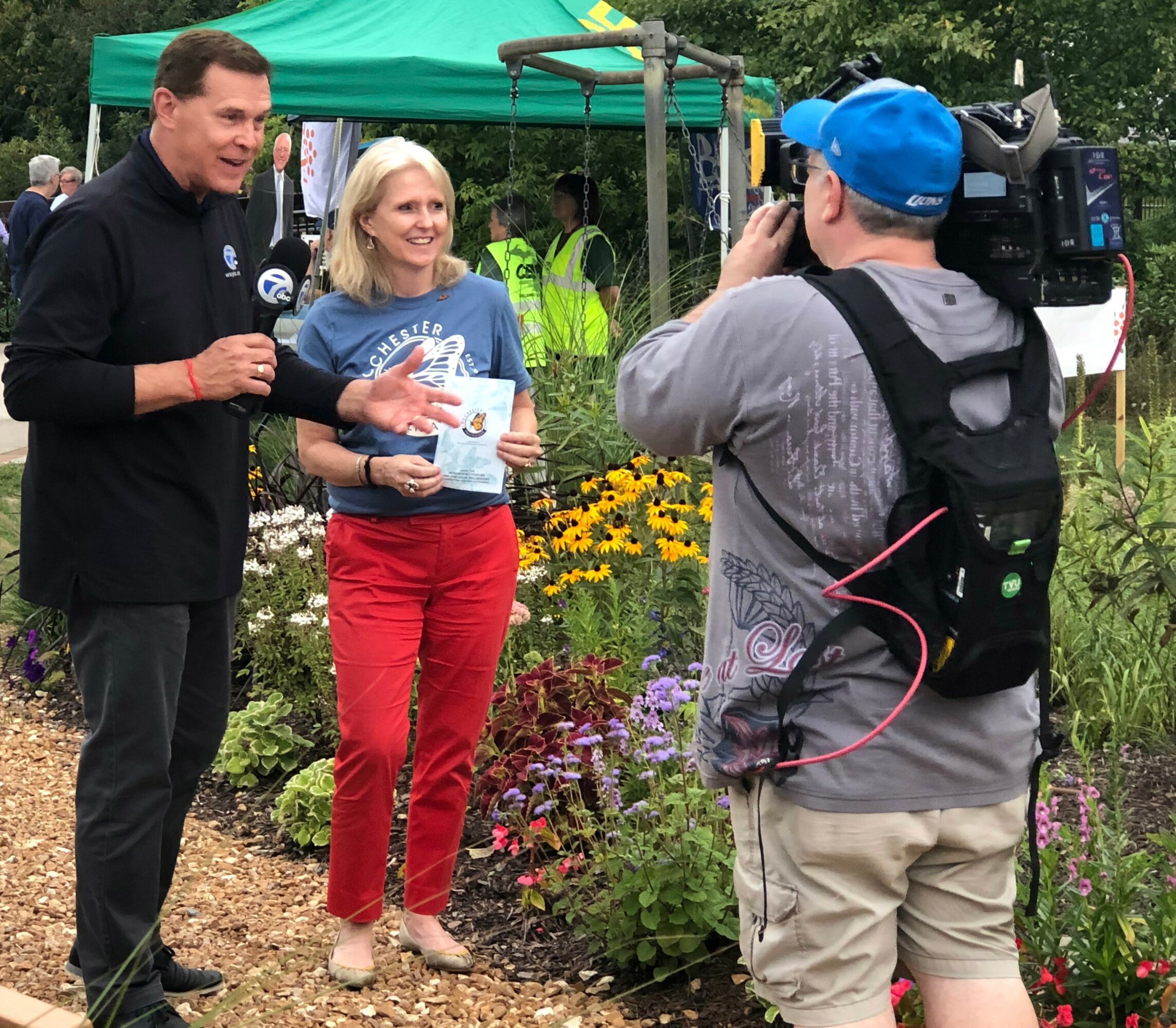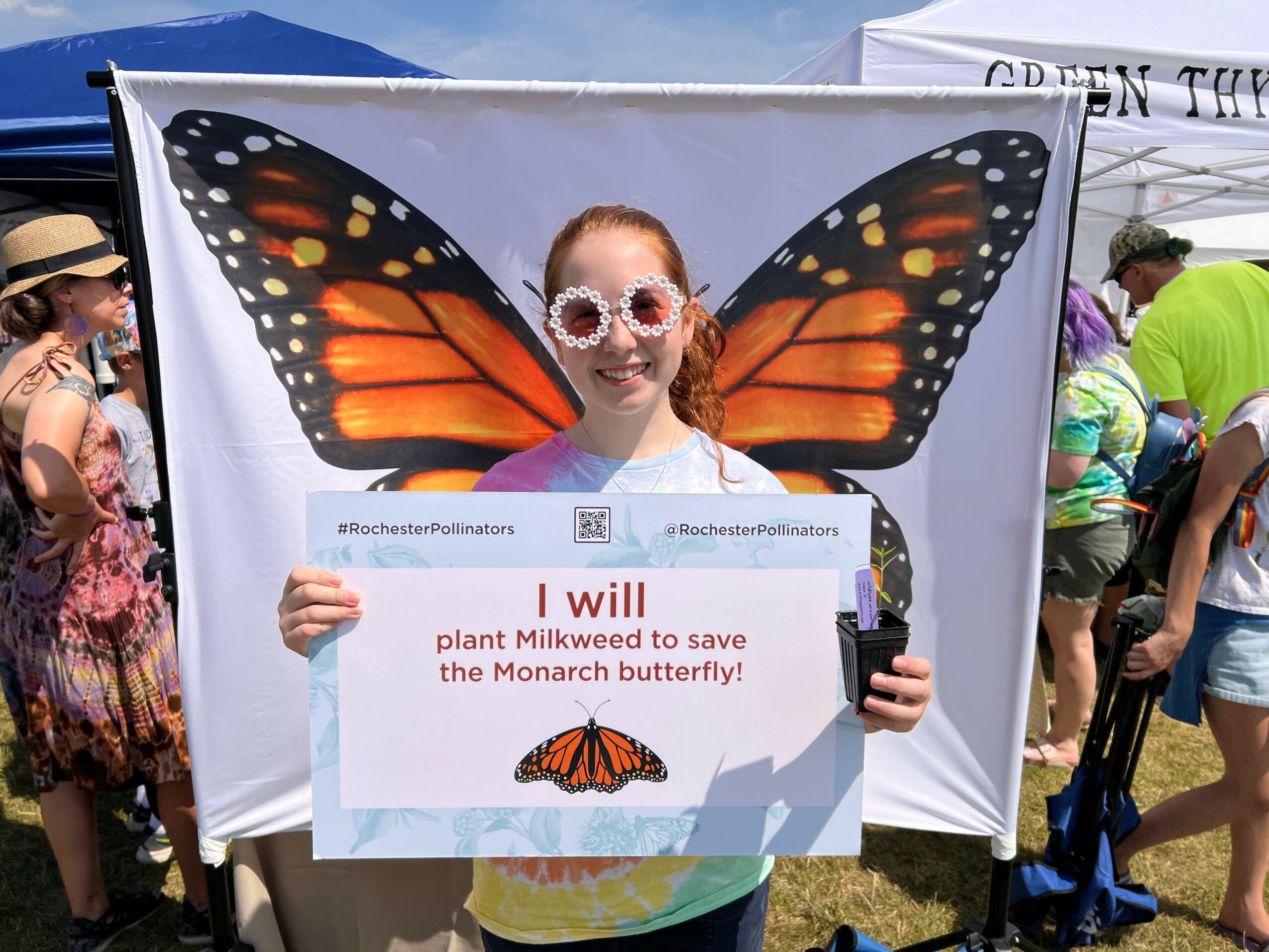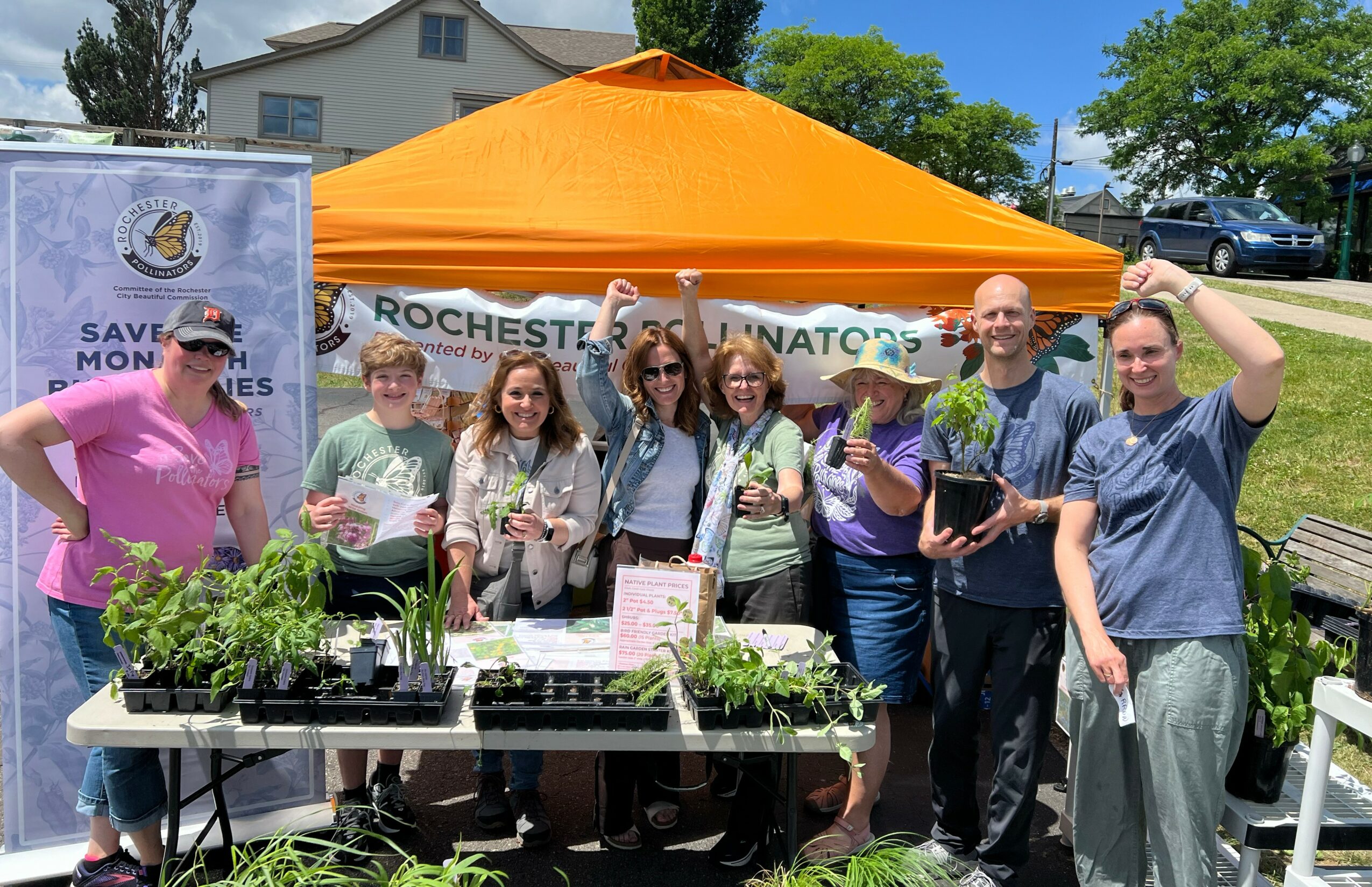

Today we’d like to introduce you to Marilyn Trent.
Hi Marilyn, please kick things off for us with an introduction to yourself and your story.
I began my career as a freelance graphic designer in 1991. As my client base grew, so did Trent Creative, a design and branding agency. I continue to run it today and specialize in branding, digital and print media.
In January 2019, I received a letter from the Environmental Defense Fund warning that Monarch butterflies were disappearing at an alarming rate—their population had dropped by 90% over the past two decades. The cause? A lack of milkweed, the only plant on which Monarchs can lay their eggs, and a steep decline in native nectar plants due to widespread pesticide and herbicide use. It seemed like an easy fix to me, that anyone with a container or yard could do.
I thought everyone needed to know this, so I began by visiting the City of Rochester with a simple request: plant milkweed along Main Street. It wouldn’t cost anything to replace or add native plants to the landscaping that the city already maintains. It was a yes with an opportunity to start a committee called Rochester Pollinators under the Rochester City Beautiful Commission. That small step grew into something much larger—a thriving effort to promote sustainability and conservation throughout the city. And that’s how Rochester Pollinators was born. Because I owned a design agency, I put my designers to work and we branded, designed all of the marketing materials and created a website to educate people on how they could join the cause of saving our beneficial butterflies and bees.
We all face challenges, but looking back would you describe it as a relatively smooth road?
It has been one of the smoothest roads I have taken to motivate people to take action about a cause I believe in. Nine times out of ten, the question asked is, ‘What do I plant, and where do I get the plants?’ The only struggle is that there are not enough commercial nurseries that sell authentic native plants. A few are coming on board, which I am pleased to see. Bordines, one of the mid-sized local nurseries, is now selling them. I have learned a great deal, but fortunately, there are many people eager to learn more about how their plant choices can make a significant difference in saving our pollinator insects. I am deeply concerned that as people begin to ask for native plants, nurseries may not have them and will instead sell non-native plants as native.
Thanks for sharing that. So, maybe next you can tell us a bit more about your business?
My organization, Rochester Pollinators began as a side hustle has now grown into a dynamic force for environmental stewardship, powered by more than 260 dedicated volunteers. Together, we’ve sold or distributed over 65,000 native plants, delivered more than 50 educational presentations, and helped establish six public native plant gardens in the City of Rochester. Beyond our local work, we’ve mentored residents in other Michigan communities to launch pollinator-friendly initiatives of their own.
We’re proud to have cultivated a loyal and engaged following on Facebook, Instagram, and within the Rochester Pollinators online group. What truly sets us apart is the deep, ongoing engagement we receive from our supporters, reflecting a shared commitment to sustainability and conservation on both public and private lands. This strong sense of community is made possible by the tireless efforts of our Board of Directors and volunteers.
Our latest and most transformative project is the creation of a 1,000-square-foot mini-forest on previously degraded urban land. Planted using the Miyawaki method, this biodiverse forest will become self-sustaining within three years. It involved 40 volunteers and is projected to be 10 degrees cooler than surrounding areas, sequestering up to 700 pounds of carbon in its first year, soaking up more than 25,000 gallons of stormwater, and providing critical habitat for pollinators and wildlife. Beyond its ecological benefits, the mini-forest serves as a powerful educational resource for students and visitors, offering a peaceful space for reflection with seating integrated into the landscape. It has been a whole community effort that involved the City of Rochester DPW, City Beautiful Commission, the Tree Committee, the Daughters of the American Revolution, the Boy Scouts, Girl Scouts, Rochester Regional Chamber of Commerce, and Rochester High School Students. We have received funds from First State Bank and the Community Foundation of Greater Rochester.
What were you like growing up?
As a child, I had a deep love for animals and nature. One of my favorite books was Dr. Doolittle—I dreamed of being able to talk to animals and becoming a veterinarian. I was always compassionate, especially when I saw someone being bullied, and I naturally wanted to help. I also loved playing the guitar and spending time with my friends.
Contact Info:
- Website: https://rochesterpollinators.org/
- Instagram: https://www.instagram.com/rochesterpollinators/
- Facebook: @rochesterpollinators
- LinkedIn: https://www.linkedin.com/company/rochester-pollinators/
- Youtube: https://www.youtube.com/@rochesterpollinators2288
